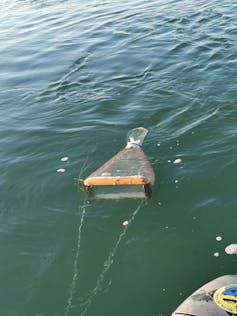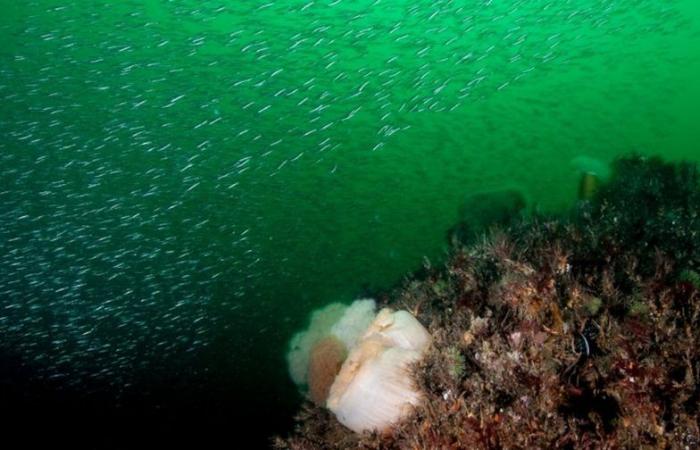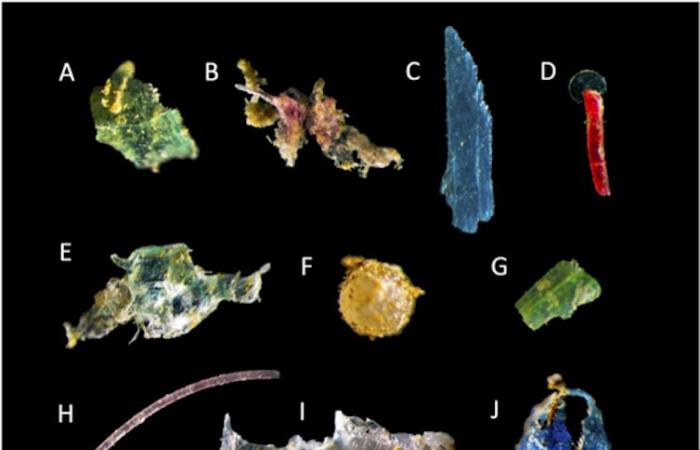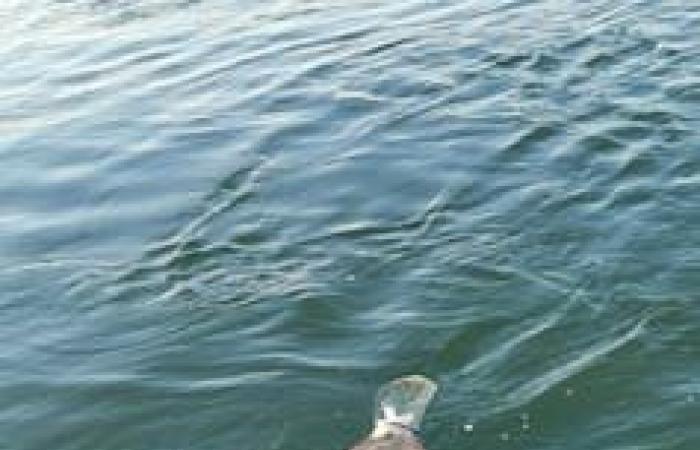Our clothes are made mainly of… plastic.
Unlike cotton, which comes from a plant, polyester and the famous spandex or lycra – which make clothes more stretchy – do not grow in nature. These are artificial materials made from plastic that are used in the production of synthetic textiles.
When we wash them, tiny plastic fibers come off our clothes and then pass into the pipes. Once they arrive at the wastewater treatment plant, they bypass the elimination process due to their microscopic size (hence their name, microplastics) and end up in our aquatic ecosystems.
We recently conducted an assessment of microplastics present in the waters of the St. Lawrence River and its estuary. We found that the most abundant microplastics were polyester textile fibers.
Elsewhere in the world, we find similar results. In the Caspian Sea, for example, textile fibers were also the most common type of microplastic found in the digestive systems of fish.
In this article, we propose to paint a portrait of this worrying situation.
Spotlight on microplastics
Microplastics (ranging in size from the thickness of a human hair to that of a toothpick) have been detected everywhere on the planet, including in water, sediments, soil, air, animals and even in clouds and human blood.
Globally, it is estimated that nearly 110 million tonnes of plastics have accumulated in rivers over time, of which 12% are microplastics and 88% macroplastics (the size of which is greater than the thickness of said plastic). toothpick).
Microplastics are recognized as being the products of the degradation of macroplastics. For example, we can think of abrasion particles from tires, plastic bottles or fibers from washing textiles.
Result ? A substantial proportion of today’s macroplastics will degrade and transform into tomorrow’s microplastics.
The adverse effects of exposure to microplastics on the health of living organisms have been widely documented. In humans, this exposure has been associated with cell disruption, metabolic disorders, immune system response, and negative effects on reproduction and development.
The range of documented health effects of microplastics is likely just the tip of the iceberg, as global research efforts continue to study various species.
Microplastics for dinner?
Microplastics can, among other things, accumulate in fish that are caught and raised in aquaculture. You will have guessed that they eventually end up… on our plates.
A recent study demonstrated the presence of microplastics such as synthetic textile fibers in the flesh of commercial fish intended for human consumption. The amount of microplastics was also greater in carnivorous fish, that is, those that feed on other fish.
Consuming herbivorous fish such as tilapia, rather than carnivorous fish such as tuna, salmon and trout, could thus reduce the amount of microplastics in our meals.
The St. Lawrence River and its estuary
The river and its estuary drain approximately 25% of the world’s fresh water. And more than 45 million people live nearby.
As you sail along the river, microplastic contamination can eventually reach the Atlantic Ocean.
This situation is particularly worrying. For what ? On the one hand, because it helps predict future loads of microplastics in marine waters. And on the other, because the river is home to several million animals, invertebrates and plants.
In our study, we evaluated the portion of microplastics that float in the first 40 centimeters below the water surface at 11 distinct sites in the St. Lawrence river and estuary.
(Valérie Langlois), Provided by the author
Our results are unequivocal: microplastics are present at all sampling sites. The most abundant categories of microplastics were textile fibers, followed by fragments (from, for example, plastic bags) and spheres (from, among others, cosmetic products).
Further analysis determined that the predominant materials were polyester, polyethylene, polypropylene, nylon and polystyrene.
These data provide valuable information on the distribution and behavior of microplastics in order to better preserve and manage our freshwater resources.
(Martin Tremblay), Provided by the author
Robert Charlebois sang “We must wash the water, wash the water, wash the water”
Poly-Mer – a small Quebec company – has designed a net that attaches behind a canoe or kayak to collect microplastics that float on the surface.
In collaboration with Stratégies Saint-Laurent – a Quebec non-profit organization which aims to encourage the involvement of local communities in the protection, rehabilitation and development of the Saint-Laurent – we tested the Poly-Mer net and demonstrated that it could indeed help filter microplastics from water.

(Valérie Langlois), Provided by the author
For a single human, a single city, what can I do?
The Kunming-Montreal Biodiversity Agreement signed in 2022 (also known as COP15) once again recognized the importance of working together towards the elimination of global plastic pollution.
What if we reduced our consumption of plastic? The question “do we really need it” has never been more relevant than today, both for the wallet and for the environment.
For example, municipal household compost management should avoid the use of plastic bags at all costs. In fact, even bags labeled as biodegradable do not completely decompose. It is better to put food scraps directly into our compost bin and wash it regularly.
Proper disposal of plastics at source is essential, as is investment in wastewater treatment technologies that can remove microplastics.








